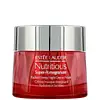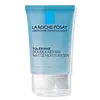What's inside
What's inside
 Key Ingredients
Key Ingredients

 Benefits
Benefits

 Concerns
Concerns

 Ingredients Side-by-side
Ingredients Side-by-side

Water
Skin ConditioningDimethicone
EmollientIsohexadecane
EmollientGlycerin
HumectantBis-PEG-18 Methyl Ether Dimethyl Silane
EmollientButylene Glycol
HumectantPEG-10 Dimethicone
Skin ConditioningPropanediol
SolventPetrolatum
EmollientDisteardimonium Hectorite
StabilisingSucrose
HumectantHypnea Musciformis Extract
Skin ProtectingVaccinium Angustifolium Fruit Extract
Skin ProtectingPaeonia Suffruticosa Root Extract
Skin ProtectingSapindus Mukorossi Fruit Extract
Skin ConditioningCladosiphon Okamuranus Extract
Skin ConditioningCucumis Sativus Fruit Extract
EmollientHordeum Vulgare Extract
EmollientVaccinium Macrocarpon Fruit Extract
AstringentLycium Chinense Fruit Extract
AntioxidantGelidiella Acerosa Extract
Skin ProtectingGlycine Soja Seed Extract
Skin ConditioningIsododecane
EmollientAcetyl Glucosamine
Skin ConditioningSorbitol
HumectantTocopheryl Acetate
AntioxidantPunica Granatum Extract
AstringentCaffeine
Skin ConditioningErgothioneine
AntioxidantYeast Extract
Skin ConditioningPropylene Glycol Dicaprate
EmollientSodium Hyaluronate
HumectantHelianthus Annuus Seedcake
AbrasivePolysilicone-11
Caesalpinia Spinosa Gum
Skin ConditioningCaprylyl Glycol
EmollientPropylene Carbonate
SolventPolyethylene
AbrasiveTetrahexyldecyl Ascorbate
AntioxidantDextrin
AbsorbentCitric Acid
BufferingPEG-32
HumectantPEG-6
HumectantParfum
MaskingHexylene Glycol
EmulsifyingSodium Citrate
BufferingDisodium EDTA
BHT
AntioxidantCitral
PerfumingPhenoxyethanol
PreservativeIron Oxides
Water, Dimethicone, Isohexadecane, Glycerin, Bis-PEG-18 Methyl Ether Dimethyl Silane, Butylene Glycol, PEG-10 Dimethicone, Propanediol, Petrolatum, Disteardimonium Hectorite, Sucrose, Hypnea Musciformis Extract, Vaccinium Angustifolium Fruit Extract, Paeonia Suffruticosa Root Extract, Sapindus Mukorossi Fruit Extract, Cladosiphon Okamuranus Extract, Cucumis Sativus Fruit Extract, Hordeum Vulgare Extract, Vaccinium Macrocarpon Fruit Extract, Lycium Chinense Fruit Extract, Gelidiella Acerosa Extract, Glycine Soja Seed Extract, Isododecane, Acetyl Glucosamine, Sorbitol, Tocopheryl Acetate, Punica Granatum Extract, Caffeine, Ergothioneine, Yeast Extract, Propylene Glycol Dicaprate, Sodium Hyaluronate, Helianthus Annuus Seedcake, Polysilicone-11, Caesalpinia Spinosa Gum, Caprylyl Glycol, Propylene Carbonate, Polyethylene, Tetrahexyldecyl Ascorbate, Dextrin, Citric Acid, PEG-32, PEG-6, Parfum, Hexylene Glycol, Sodium Citrate, Disodium EDTA, BHT, Citral, Phenoxyethanol, Iron Oxides
Water
Skin ConditioningGlycerin
HumectantSilica
AbrasiveBetaine
HumectantNiacinamide
SmoothingCetearyl Isononanoate
EmollientZea Mays Starch
AbsorbentCeramide NP
Skin ConditioningCarbomer
Emulsion StabilisingGlyceryl Stearate Citrate
EmollientSodium Hyaluronate
HumectantSodium Hydroxide
BufferingPerlite
AbsorbentHydroxyacetophenone
AntioxidantCaprylyl Glycol
EmollientXanthan Gum
Emulsifying
 Reviews
Reviews

Ingredients Explained
These ingredients are found in both products.
Ingredients higher up in an ingredient list are typically present in a larger amount.
Caprylyl Glycol is a humectant and emollient, meaning it attracts and preserves moisture.
It is a common ingredient in many products, especially those designed to hydrate skin. The primary benefits are retaining moisture, skin softening, and promoting a healthy skin barrier.
Though Caprylyl Glycol is an alcohol derived from fatty acids, it is not the kind that can dry out skin.
This ingredient is also used as a preservative to extend the life of products. It has slight antimicrobial properties.
Learn more about Caprylyl GlycolGlycerin is already naturally found in your skin. It helps moisturize and protect your skin.
A study from 2016 found glycerin to be more effective as a humectant than AHAs and hyaluronic acid.
As a humectant, it helps the skin stay hydrated by pulling moisture to your skin. The low molecular weight of glycerin allows it to pull moisture into the deeper layers of your skin.
Hydrated skin improves your skin barrier; Your skin barrier helps protect against irritants and bacteria.
Glycerin has also been found to have antimicrobial and antiviral properties. Due to these properties, glycerin is often used in wound and burn treatments.
In cosmetics, glycerin is usually derived from plants such as soybean or palm. However, it can also be sourced from animals, such as tallow or animal fat.
This ingredient is organic, colorless, odorless, and non-toxic.
Glycerin is the name for this ingredient in American English. British English uses Glycerol/Glycerine.
Learn more about GlycerinSodium Hyaluronate is hyaluronic acid's salt form. It is commonly derived from the sodium salt of hyaluronic acid.
Like hyaluronic acid, it is great at holding water and acts as a humectant. This makes it a great skin hydrating ingredient.
Sodium Hyaluronate is naturally occurring in our bodies and is mostly found in eye fluid and joints.
These are some other common types of Hyaluronic Acid:
Learn more about Sodium HyaluronateWater. It's the most common cosmetic ingredient of all. You'll usually see it at the top of ingredient lists, meaning that it makes up the largest part of the product.
So why is it so popular? Water most often acts as a solvent - this means that it helps dissolve other ingredients into the formulation.
You'll also recognize water as that liquid we all need to stay alive. If you see this, drink a glass of water. Stay hydrated!
Learn more about Water